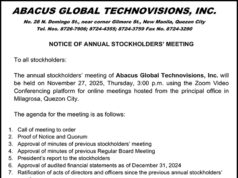A man’s ability to hold his urine, to go whenever he wants and as quickly as he needs to is often taken for granted until he reaches a point where the prostate enlarges causing a blockade to the otherwise smooth urinary flow. At the same time, his ability to perform in the bedroom may also take a hit as he matures in age.
These conditions, namely lower urinary tract symptoms (LUTS) and erectile dysfunction (ED), are not directly related to each other, but the treatment of LUTS can have an effect on ED. The common factor of these two conditions is age. As a man grows older, his urinary stream and his penile erections are no longer as strong as before. Common LUTS include storage and voiding symptoms. Storage symptoms include inability to hold the bladder, the need to void when there is an urge, frequent trips to the toilet, leakage of urine and waking up in the middle of the night because of the need to pass urine. Voiding symptoms include slow stream, interrupted stream, difficulty with starting to passing urine, incomplete bladder emptying and dribbling of urine at the end of the stream.
LUTS is commonly due to Benign Prostate Hypertrophy (BPH). Up to 40% of men would have BPH once they cross the age of 50 and this can increase up to 70% in men above the age of 70. BPH is a benign disease but these symptoms are bothersome enough to affect a man’s quality of life. Trips to the toilet in the middle of the night not only affects his sleep but also his partner’s.
Current treatment for BPH include oral medications and surgery. Oral medication have been shown to improve LUTS but there are significant side effects on a man’s erectile and ejaculatory function. Men on these medication complain of weaker erections, decreased volumes of semen during ejaculation or even dry orgasms. Surgeries performed for the treatment of BPH include transurethral resection of prostate (TURP) and transurethral laser vaporization of prostate (TUVP). Both procedures create a good channel for adequate flow of urine and the patients can be taken off medications after undergoing surgery. However, almost all men who undergo TURP or TUVP would not be able to ejaculate. Some may even have painful orgasms, not to mention ED.
Prostatic urethral lift using the Urolift system would bridge the gap in terms of treatment of BPH for sexually active men who are either not keen to take long-term medication or are unable to accept the side effects of medication and surgery. Urolift has been shown to deliver good treatment outcomes without the unwanted side effects of sexual dysfunction. Unlike other procedures, there is no damage done to the prostate tissue minimizing side effects such as painful urination.
Urolift is a simple day procedure that has been FDA-approved since 2013 and is currently available in Mount Elizabeth Hospital, Singapore. Using implants that are placed via a small scope inserted into urine tube (urethra), these implants open up the channel without the need to remove any tissue. It is akin to drawing open the curtains to let more light into the room. The Urolift implants draws apart the obstructing prostate tissue to enable urine to flow out from the bladder. Typically, four to six implants will be placed depending on the configuration of the prostate.
Most men who undergo Urolift treatment would not need to have a urinary catheter placed and they can return to their daily activities much quicker. Sexual function is not compromised to achieve resolution of bothersome urinary symptoms and long-term medications will not be required after the procedure.
This article is contributed by Dr. Ronny Tan, Urologist and Andrologist in Mount Elizabeth Hospital. Dr. Tan was the Director of Andrology in Tan Tock Seng Hospital and the first in the department who started the clinical service using high power greenlight laser vaporization for treating benign prostate enlargement. For more enquiries, please contact our Patient Assistance Centre (Manila) at manila.ph@parkwaypantai.com or +63 917-526-7576.



